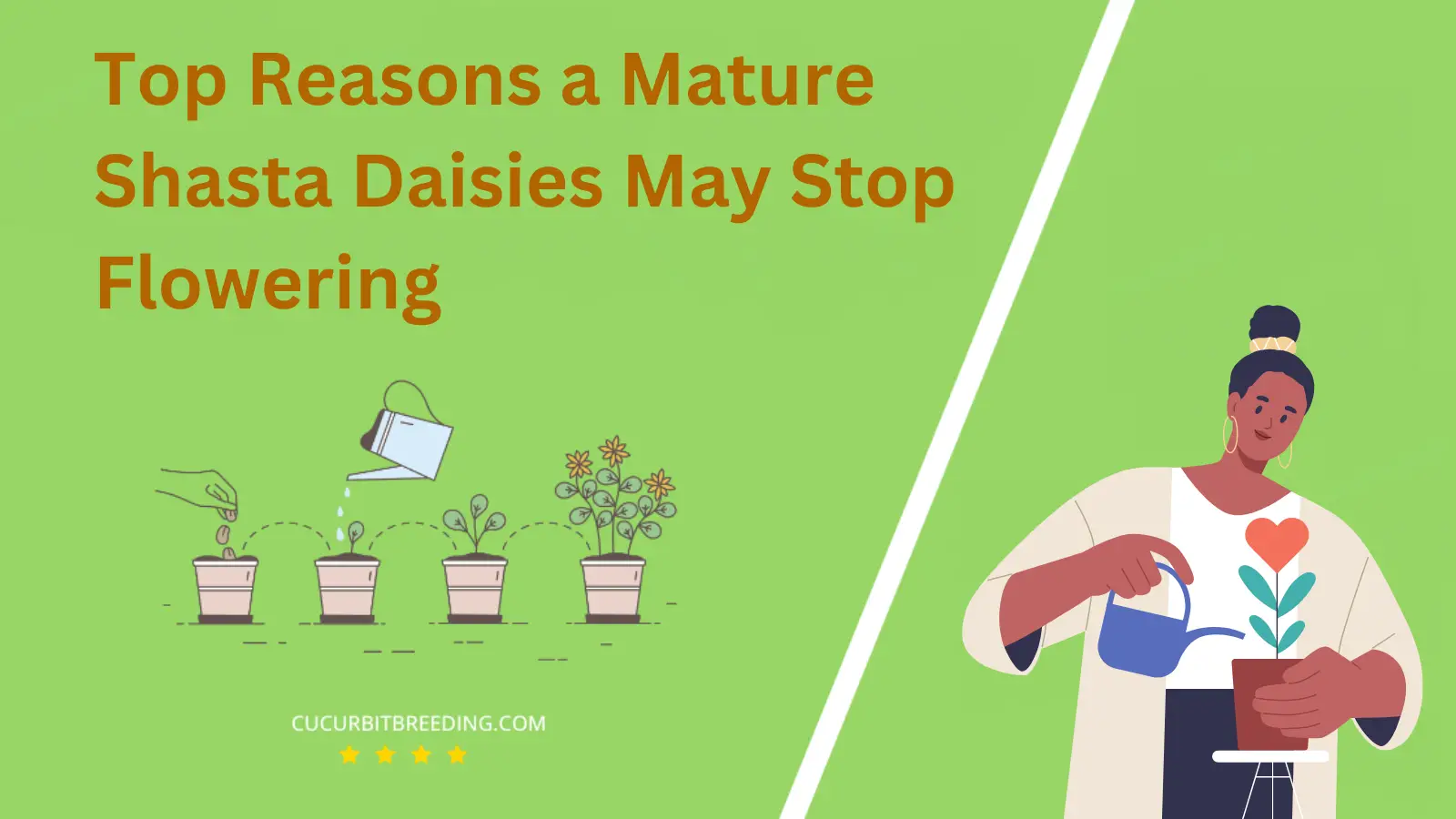
Ever gazed upon a field of dazzling white petals and wondered, “When do Shasta Daisies bloom?” Presenting an elegant spectacle, these perennials are a gardener’s delight and a symbol of summer’s grandeur.
Whether you’re a seasoned gardener or a floral enthusiast, understanding the blooming cycle of these beauties can enhance your gardening prowess and appreciation for nature’s timing.
When Do Shasta Daisies Bloom?
Shasta daisies typically begin to bloom in early summer, around June, and continue to bloom until early fall, often as late as September. The specific timing can vary depending on the climate and growing conditions. They are known for their long blooming period, which can be prolonged with proper care, such as deadheading spent flowers.
| Stage | Description |
|---|---|
| Germination | Spring (March-May) |
| Growth | Summer (June-August) |
| Blooming | Summer (June-August) |
| Dormancy | (December-February) |
How Long Do Shasta Daisies Bloom?
Shasta Daisies typically bloom for a period of three to four months, generally starting in early summer and continuing until early fall. However, the exact timing can vary depending on the climate and specific growing conditions.
How Light Affects Shasta Daisies Blooms?
Light plays a crucial role in Shasta daisies bloom. These plants need full sun exposure for at least six hours a day to flower abundantly. Inadequate sunlight can lead to reduced blooming and leggy or weak plants. The optimal light conditions stimulate photosynthesis, promoting growth and flower production in Shasta daisies. However, in extremely hot regions, some afternoon shade is beneficial to prevent the plants from scorching. It’s important to note that while Shasta daisies are quite adaptable, without sufficient light, the overall health and vitality of the plant may suffer.
Will Shasta Daisies Bloom the First Year You Plant Them?
Yes, Shasta Daisies will bloom the first year you plant them. However, it is important to note that this is true if you plant them in the spring. If they are planted in the fall, they will not bloom until the following spring. They require a full sun location and well-drained soil to thrive and bloom properly.
Will Shasta Daisies Bloom Every Year?
Yes, Shasta Daisies will bloom every year. They are a perennial plant, meaning they live for more than two years. Once planted and established, they will produce beautiful white blooms each summer without needing to be replanted.

Should I Deadhead Shasta Daisies Blooms?
Yes, you should deadhead Shasta Daisies blooms. Deadheading, or the process of removing spent flowers, helps promote further blooming. It prevents the plant from using its energy to produce seeds and instead directs it towards creating more blooms. This practice also helps maintain the plant’s neat appearance.
Top Reasons a Mature Shasta Daisies May Stop Flowering

There are several reasons why mature Shasta daisies may stop flowering. Insufficient sunlight is a common cause as these plants require full sun to bloom. They need at least 6 hours of direct sunlight per day. Therefore, if they are planted in a shady location, they may not flower properly.
Another reason could be improper watering. Shasta daisies need well-drained soil and do not do well in waterlogged conditions. Overwatering can cause root rot and prevent flowering. On the other hand, underwatering can also stress the plant and inhibit blooming.
Additionally, lack of nutrients can affect flowering. If the soil is not rich in essential nutrients, especially phosphorus which promotes blooming, the plant may not produce flowers. A lack of proper fertilization can lead to a deficiency of these necessary nutrients.
Lastly, aging can be a factor. Shasta daisies have a lifespan of 2 to 3 years. As the plant ages, it may produce fewer flowers or stop flowering altogether. Regularly dividing and replanting the daisies can ensure a consistent display of flowers.